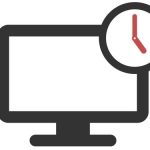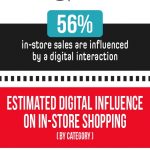America’s Digital Lifeline Is On Life Support
Tom Esselman is on the front lines of the quest to bridge the digital divide in America, the widening chasm between those who enjoy all the advantages of the internet and the millions of Americans who can’t. Over 60% of those households earning under $20,000 don’t have broadband access, which makes it more difficult to succeed academically, search for jobs, and keep in touch with family members.
As the CEO of Connecting for Good, a nonprofit in Kansas City, Esselman helps several thousand households at low-income housing projects in the city get free access to the internet. “It’s so basic,” says Esselman, who gave up the corporate life as an innovation executive at Hallmark (he’s the one who helped come up with those cards that play music when they’re opened). “You’re helping extremely low-income people get internet to improve their lives.”
VIDEO: WHY AFFORDABLE BROADBAND MIGHT BE AT RISK FOR MILLIONS OF LOW-INCOME AMERICANS
His group has provided such services since 2012, in addition to conducting computer training sessions for poor and working-class Kansas City residents. Now it wants to expand its reach, having recently applied for a federal program called Lifeline, which provides a monthly subsidy of $9.25 to low-income Americans to allow them to get online. Nonprofit groups can also apply for the subsidy to help them offer free or low-cost broadband access to the community. Getting the subsidy would allow Connecting for Good to enable thousands more households in the neighborhood to get online for free.
But the Trump administration just made it harder for the new program, which launched in December, to have an impact. Ajit Pai, the newly appointed chairman of the Federal Communications Commission, has announced a review of the program and blocked most of the already-vetted companies from participating in Lifeline, which could make it difficult for tens of thousands of low-income Americans to get online. The move shocked broadband access proponents in both parties, who have long argued that helping low-income and rural Americans get internet access is essential to educating young people and training the workforce of the future. Pai and the program’s critics have cited isolated cases of waste and fraud in which providers took advantage of the program (it also subsidized wireless phone access) and pocketed subsides while exaggerating the number of subscribers.
But that’s no reason to cut back on this essential program. On the contrary, it should be expanded.
Since he first heard the news on February 3, Chike Aguh, CEO of EveryoneOn, an internet access and outreach nonprofit, has heard from everyone from school district leaders to people working in battered women’s shelters who worry about the impact of the FCC’s action. “There are millions of people in this country who need what this program provides,” he says.
Aguh’s group works with internet service providers to connect them with over 430,000 people in 48 states who need broadband access. He points out that the FCC’s action essentially shuts down the program for now, since the nine companies whose approval was revoked by the agency were some of the only ones offering broadband. Though about 900 providers have been approved over the years to provide Lifeline phone subsides, only a few also offer broadband access.
Instead of revoking the approval of the providers, there are other ways the FCC could have made sure they were effective. “Nobody wants fraud, but there are other ways to get around that—you could do an audit every 60 days or require additional documentation from customers,” says Aguh.
Nearly 40 groups, including the American Library Association, Free Press, and the National Hispanic Media Coalition , sent a letter last week to the FCC, asking it to allow the nine companies to participate in the program and to “set aside any further efforts to erode Lifeline’s promise.” The groups called claims about waste and fraud a “long-discredited argument.” There is also concern that the FCC’s action will discourage more providers from coming forward to apply for subsidies.
And the FCC’s action could doom the program. When Aguh first heard the news, he grew pessimistic. “I thought that this could be the first wave of an assault on this program, which has been around since the Reagan years when it subsidized phone service for rural and poor Americans, to not have it exist one day. And there are millions of people in this country who need what Lifeline provides.”
Fast Company , Read Full Story
(35)














